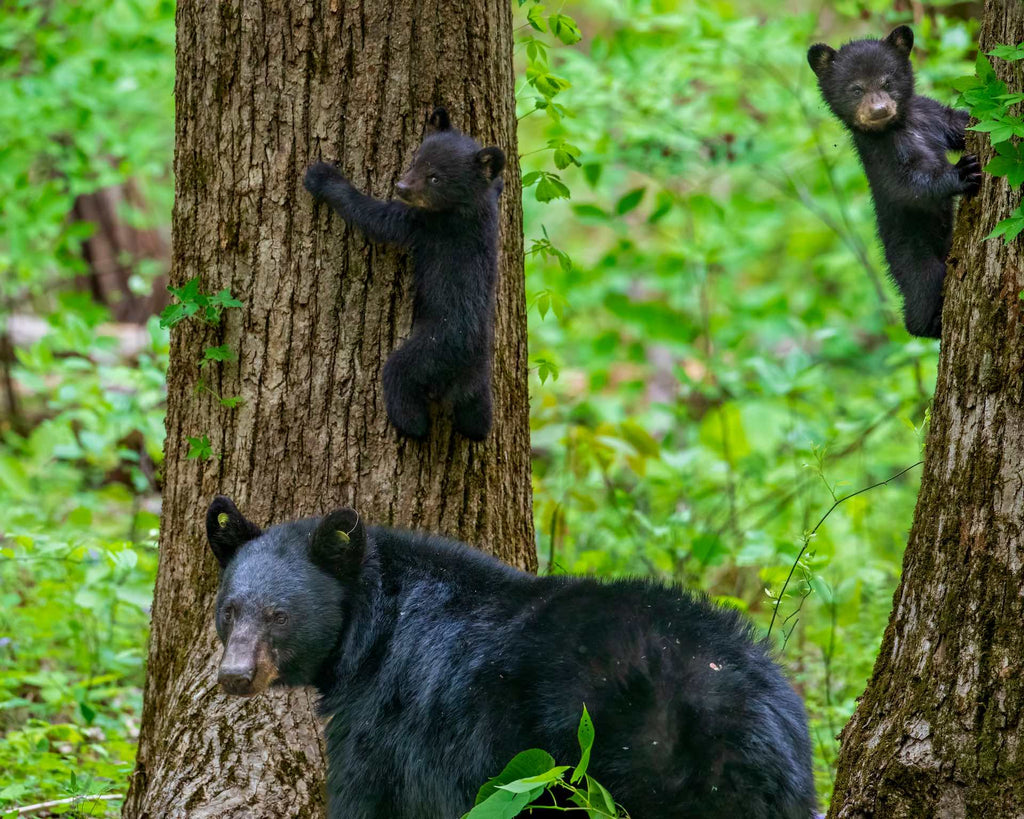Exploring the Secret World of Black Bear Communication
Posted by Securr Blogger on
Welcome, nature enthusiasts and wildlife lovers! Here at BearSaver, we believe that the more we know about bears, the better we can coexist with them. With that in mind, today we're delving into the fascinating realm of black bear communication. These majestic creatures possess a sophisticated system of communication that extends beyond their iconic growls and roars. Let’s explore!
Understanding bear communication
Contrary to popular belief, black bears aren't merely solitary animals. They engage in a wide array of vocalizations, body language, and scent-based communication to convey their intentions, emotions, and territorial boundaries.
Vocalizations
Black bears produce a range of vocalizations, from low grunts and woofs to high-pitched screams. Each sound carries a unique message. For instance, a mother bear will emit gentle hums to soothe her cubs. Conversely, growls indicate aggression or dominance.
Body language
A bear's body language reveals valuable insights about its mood and intentions. A relaxed bear may sit or lie down while observing its surroundings, indicating a non-threatening demeanor. However, a bear standing on its hind legs signals alertness or curiosity.
Ears and tail
Pay attention to a bear's ears and tail! Raised ears suggest attentiveness, whereas flattened ears could indicate aggression or fear. A bear's tail may be a helpful indicator too. A raised tail is a sign of confidence, while a lowered tail may imply submission or unease.
Scent marking
Scent plays a vital role in black bear communication. They have a keen sense of smell, which allows them to identify individuals and convey messages through scent marking. Bears often rub against trees or use urine to mark their territory and communicate with other bears.
Pheromones
Pheromones, chemical substances secreted by black bears, help them communicate reproductive status and social information. Scent glands located on their feet and anal region release specific pheromones that other bears can detect. This enables them to assess dominance and mating availability.
Communication between cubs and mothers
The bond between black bear cubs and their mothers is one of the most heartwarming aspects of their communication. Cubs emit soft, high-pitched vocalizations to stay in contact with their mother. This ensures their safety and well-being in the vast wilderness.
Aggression and warning signals
Black bears employ various warning signals before resorting to aggression. They may clack their teeth together, huff loudly, or perform bluff charges to deter potential threats. These actions serve as a clear message to back off and avoid confrontation.
Non-verbal communication
Non-verbal cues are crucial in black bear communication. When bears engage in play behavior, such as rolling, pawing, and mock fighting, it signifies friendly interaction rather than aggression. Observing this behavior can provide insights into their social dynamics.
Respecting bear communication
While understanding black bear communication is fascinating, it's essential to remember that these animals are wild and should be respected from a safe distance. Appreciate their complex communication system while maintaining a safe and responsible approach to bear encounters.
Contact BearSaver today
If you’d like more information about BearSaver products and how they can help you, then contact us at 800-851-3887 or sales@bearsaver.com. Our Customer Service Representatives are eager to answer all your questions and help you make the right decision with confidence. Contact us today!

